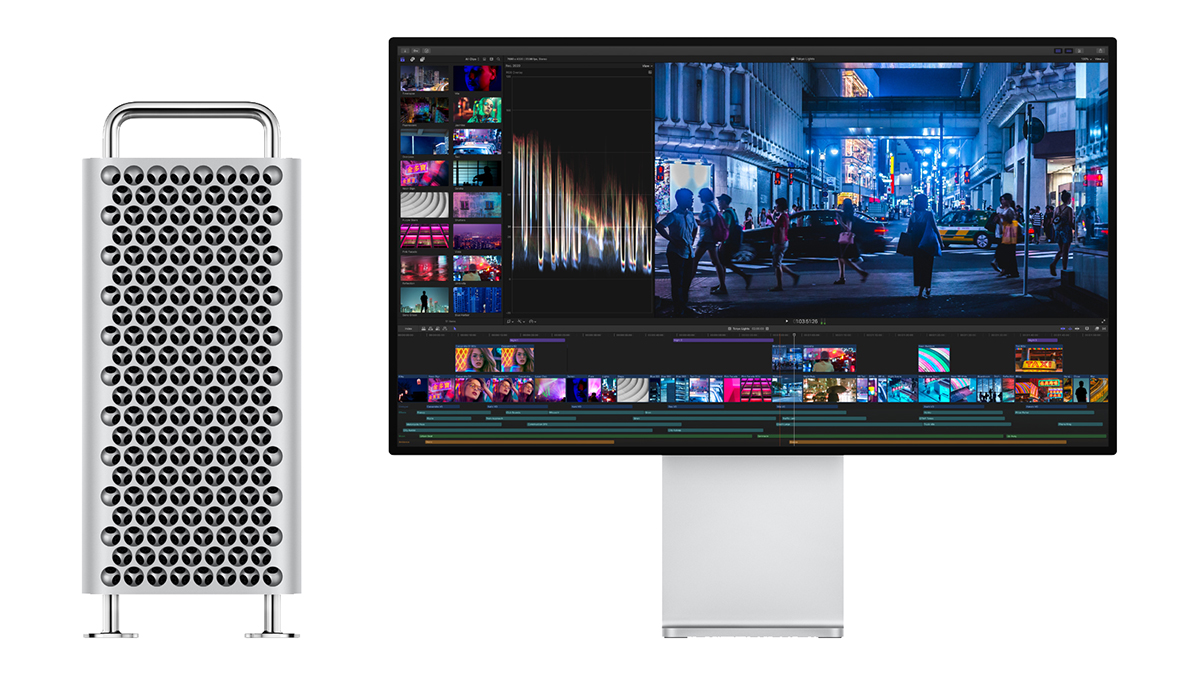

There was a blink-and-you-missed-it moment in yesterday’s Apple event: the Mac Pro got a mention as “just one more product to go” in the transition from Intel to Apple silicon, but “that’s for another day”. The current Mac Pro and the iMac Pro both made appearances, but only in benchmarks that showed how much faster and more powerful the new Mac Studio is.
There’s no doubt that the Mac Studio is an astonishingly powerful Mac. But it’s not destined to be the most powerful Mac. That’s the Mac Pro’s job, and we can learn a few things about the 2022 Mac Pro by looking at the Mac Studio and its most powerful system on a chip, the M1 Ultra.
If the Mac Studio is mid-range, the Pro is going to be amazing
The most powerful spec of the Mac Studio has the new M1 Ultra system on a chip (SoC). It takes advantage of a high-performance interconnect to turn two M1 Max chips into one super-SoC, delivering 20 CPU cores, 64 GPU cores and up to 128GB of integrated/shared memory.
That’s impressive, but back in October the well-connected Apple reporter Mark Gurman said that the 2022 Mac Pro would have “up to 40 CPU cores and 128 GPU cores on the high-end”. I don’t have any inside information on Apple’s silicon plans, but the path to Gurman's prediction seems pretty clear when you look at the numbers above: will Apple make a Mac Pro with twin M1 Ultras combined into one even more powerful chip using the same interconnect technology that made the M1 Ultra possible in the first place?
The difference between the Mac Studio and the Mac Pro is unlikely to be just processing power, though. As elegant as its pumped-up Mac Mini design is, it’s being sold as a closed box: you spec it when you buy it and then you don’t touch it again.
The Mac Pro is sold partly on its sheer power but also on its excellent expandability and its “vast configuration” via PCI Express cards and up to 1.5TB of memory. The message is repeated again and again in Apple’s marketing blurb: the Mac Pro is incredibly customisable and expandable. The Mac Studio is not.
So that's the other area Apple needs to tackle. Adding PCIe connectivity for storage and perhaps some other customised cards (such as the video acceleration cards for the current Mac Pro) seems like it'd be the easy option. Whether Apple can offer expandable memory or a way to add more GPU power if needed to the Mac Pro… well, that's the big question. Right now, no M1 Mac offers these options.
Sign up to the T3 newsletter for smarter living straight to your inbox
Get all the latest news, reviews, deals and buying guides on gorgeous tech, home and active products from the T3 experts
But perhaps Apple is hiding some more features, in the same way that it didn't mention its Ultra Fusion interconnect technology until it revealed the M1 Ultra.
It’s all very exciting, I think. The Mac Studio is an astonishing achievement, so if this is Apple’s mid-range Pro desktop I can’t wait to see what the 2022 Mac Pro is capable of. Who knows? Maybe we’ll even see it at WWDC 2022 this summer.
Writer, musician and broadcaster Carrie Marshall has been covering technology since 1998 and is particularly interested in how tech can help us live our best lives. Her CV is a who’s who of magazines, newspapers, websites and radio programmes ranging from T3, Techradar and MacFormat to the BBC, Sunday Post and People’s Friend. Carrie has written more than a dozen books, ghost-wrote two more and co-wrote seven more books and a Radio 2 documentary series; her memoir, Carrie Kills A Man, was shortlisted for the British Book Awards. When she’s not scribbling, Carrie is the singer in Glaswegian rock band Unquiet Mind (unquietmindmusic).

